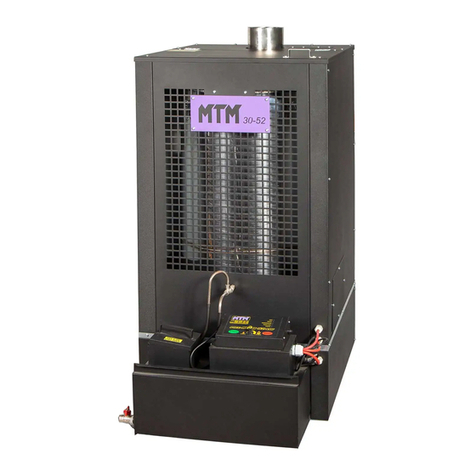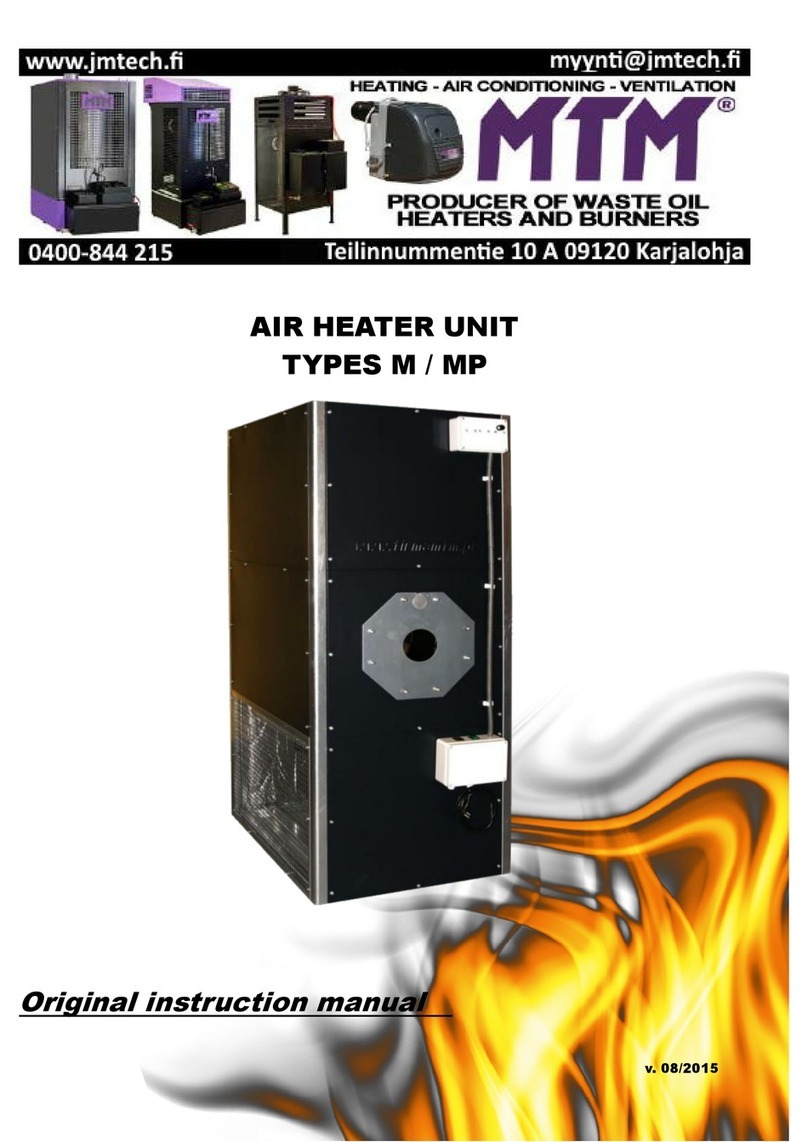I hereby declare that the oil air heater intended for heating industrial rooms
without central heating systems:
model MTM 8-30, serial no.......................................... manufactured in the year 20……..
Rated power of 8-30 kW
due to its design and structure, meets the basic safety and health requirements set forth in
the Directive 2006/42/EC on machinery and has been manufactured according to the directives as follows:
•Directive 2006/42/EC - on machinery (MD)
•Directive 2006/95/EC - on electrical equipment designed for use within certain voltage limits (LVD)
•Directive 2004/108/EC - on electromagnetic compatibility (EMCD)
•Directive 89/106/EEC - on construction products (CPD)
and the following norms:
•EN 1:1998+A1:2007 Fuel oil stoves with vaporising burners and chimney connection
•EN 303-5:1999 Heating boilers - Part 5: Solid fuel heating boilers with manual and automatic fuel charge
with rated power of max. 300 KW - Definitions, requirements, testing and marking and labelling.
•EN 953:1997+A1:2009 Safety of machinery - Guards - General requirements for the design and
construction of fixed and movable guards
•EN 60204-1:2006+A1:2009+AC:2010 Safety of machinery - Electrical equipment of machines - Part 1:
General requirements
•EN ISO 12100:2010 Safety of machinery - General principles for design - Risk assessment and risk reduction
•EN ISO 13732-1:2008 Ergonomics of the thermal environment - Methods for the assessment of human
responses to contact with surfaces - Part 1: Hot surfaces
•EN ISO 13857:2008 Safety of machinery - Safety distances to prevent hazard zones being reached by upper
and lower limbs
•EN ISO 14159:2008 Safety of machinery - Hygiene requirements for the design of machinery
•EN 60335-1:2002+A14:2010 Household and similar electrical appliances - Safety - Part 1: General
requirements
•EN 55014-1:2006+A1:2009 Electromagnetic compatibility - Requirements for household appliances,
electric tools and similar apparatus - Part 1: Emission
•EN 55014-2:1997+A2:2008 Electromagnetic compatibility (EMC) - Requirements for household
appliances, electric tools and similar apparatus - Immunity - Product family standard
•EN 61000-6-1:2007 Electronic compatibility (EMC) - Part 6-1: Generic standards - Immunity for residential,
commercial and light-industrial environments
•EN 61000-6-3:2007 Electronic compatibility (EMC) - Part 6-3: Generic standards - Emission standard for
residential, commercial and light-industrial environments





























